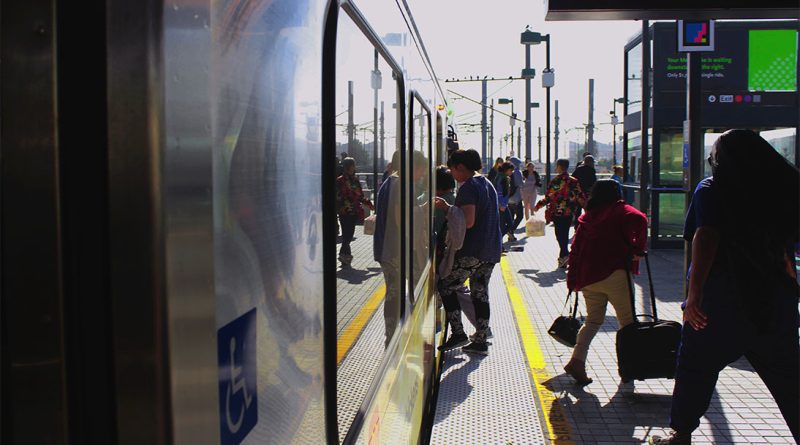U.S. Passenger Trains Are Finally Improving
The United States presents a unique case in public transportation. Despite having a history rich in railroad development, today’s American landscape is predominantly dominated by automobiles and air travel, with passenger trains playing a relatively minor role. This article delves into the intriguing question: Why doesn’t the U.S. have more passenger trains, especially considering their prominence in the past?
The Golden Age of American Railroads
The history of U.S. railroads is a tale of rapid expansion and technological marvel. In the early 19th century, the nation witnessed the birth of its railroad system. Starting with the animal-powered Leiper Railroad in 1810 and evolving into more sophisticated networks, railroads began to form the backbone of American transportation. The 1830s marked a significant milestone with the establishment of the Baltimore and Ohio Railroad (B&O), the first to offer regular passenger services, marking the beginning of public rail transport in America.
During this golden age, railroads were more than just modes of transport; they were symbols of progress and innovation. The completion of the Transcontinental Railroad in 1869 was a monumental event, knitting the country together from coast to coast and enabling unprecedented movement of people and goods. By the end of the 19th century, the U.S. had over 163,000 miles of railroad tracks, signifying the peak of its railroad dominance.
Decline of Passenger Rail in the 20th Century
The 20th century witnessed a dramatic shift in U.S. transportation preferences. The advent of automobiles and the expansion of the highway system under President Dwight D. Eisenhower marked the beginning of a new era. This era saw a gradual yet decisive turn away from railroads to roads and aviation. Government policies heavily favored these new modes of transport, leading to a decline in the use of passenger trains.
The safety and economic viability of passenger trains during this time also posed significant challenges. The early railroads, while groundbreaking, were marred by dangerous conditions, often resulting in accidents and casualties. This was compounded by the cut-throat capitalism of the era, where railroad tycoons prioritized profits over passenger safety. These factors, coupled with a lack of government oversight, led to a steady decline in the use of passenger trains for daily commuting and long-distance travel in the U.S.
Modern Era and Attempts at Revival
In response to the declining state of passenger rail, the U.S. government stepped in and established Amtrak in 1971. This was a significant move to centralize and revive passenger rail services. Amtrak, while not as extensive as rail services in other countries, has played a crucial role in maintaining intercity passenger rail travel in the U.S. It serves more than 20 million passengers annually and has seen various improvements and modernizations over the years.
Recent years have witnessed renewed interest and investment in passenger rail. The Biden administration’s investment in Amtrak’s Northeast Corridor is a notable example, highlighting a shift towards enhancing the country’s most heavily used rail line. These efforts reflect a growing recognition of the role passenger trains can play in reducing emissions and providing an alternative to road and air travel.
The Emergence of Brightline
Brightline represents a pivotal development in the U.S. passenger rail sector as the country’s only privately owned and operated intercity railroad. Launched in Florida, it has brought a fresh perspective to passenger train services in the U.S., combining speed, luxury, and efficiency.
Brightline’s Impact and Expansion
- Innovative Service: Brightline’s services in Florida, connecting major urban centers like Miami, Fort Lauderdale, and West Palm Beach, have been a game-changer. The service offers a comfortable and efficient alternative to the state’s notoriously congested highways.
- Expansion Plans: There are ambitious plans to expand Brightline’s network. A significant extension is underway to connect Orlando, which will transform the travel experience between Florida’s major tourist destinations and business hubs.
- Potential for National Influence: Brightline’s success in Florida is a model that could inspire similar projects in other parts of the U.S. It demonstrates the viability and appeal of modern, efficient, and privately funded passenger rail services.
Challenges and Opportunities
While Brightline has shown great promise, its journey hasn’t been without challenges. Balancing operational costs, expanding into new markets, and competing with established modes of transportation are ongoing hurdles. However, its success in Florida offers a blueprint for reimagining passenger rail in America.
Brightline’s emergence as a key player in the U.S. passenger rail sector is a testament to the potential for innovation and growth in this field. As it continues to expand and evolve, Brightline could play a significant role in shaping the future of American rail travel, offering a sustainable and efficient alternative to traditional road and air travel.
The Future of Passenger Trains in the U.S.
As environmental concerns become increasingly paramount, the potential for a railroad renaissance in the U.S. seems more plausible. The idea of train travel as a greener alternative is gaining traction, especially among those conscious of their carbon footprint. This environmental factor, combined with advancements in rail technology, presents an opportunity for the revival of passenger trains in America.
However, challenges remain. The U.S. is a vast and spread-out country, making the logistics of nationwide high-speed rail networks complex and costly. Furthermore, changing the entrenched car culture and travel habits of Americans poses its own set of difficulties. The future of U.S. passenger trains, therefore, hinges on strategic planning, significant investment, and a shift in public transportation preferences.
The story of passenger trains in the U.S. is one of rise, decline, and potential revival. From the golden age of railroads to the modern era, passenger trains have had a fluctuating presence in American life. The future of passenger rail in the U.S. is not just a question of transportation but also one of environmental responsibility, technological advancement, and cultural change. As the U.S. confronts these challenges, the railroads that once symbolized American progress may yet play a central role in the nation’s journey towards a more sustainable and connected future.
